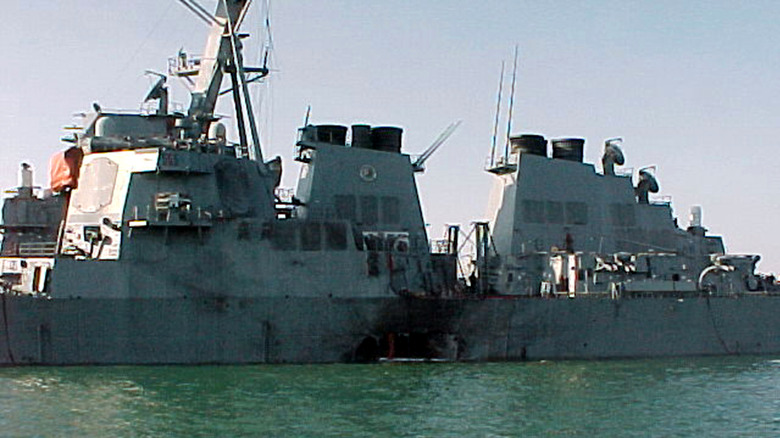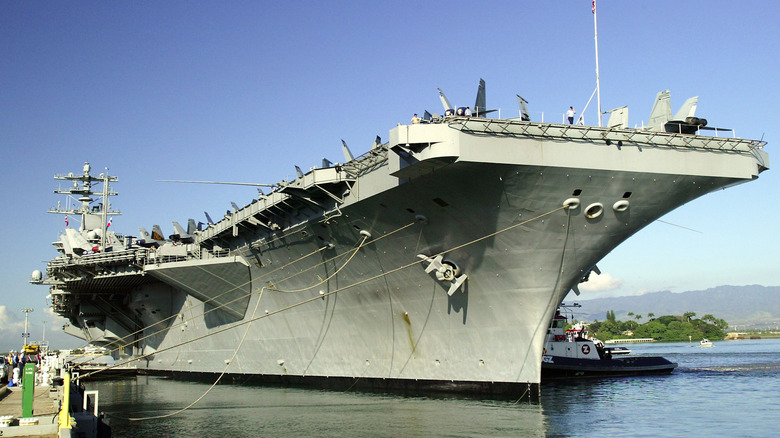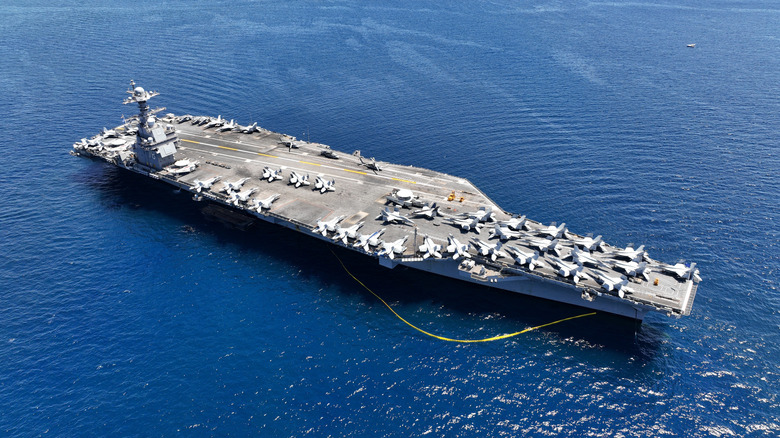Why The US Navy Detonates Bombs Near Aircraft Carriers Before They Enter Service
Before a new U.S. Naval aircraft carrier can officially be cleared for active duty, it has to go through what's called a Full Ship Shock Test (FSST). This is a critical check that ensures the ship has the ability to handle the shock from an underwater explosion that could occur during combat, such as from naval mines, torpedoes, or missile near-misses. In 2021, the Navy performed an FSST on the first nuclear-powered carrier in its class, the USS Gerald R. Ford (CVN 78).
Massive explosive charges were detonated near the hull, including a blast so powerful that the United States Geological Survey recorded it as a 3.9 magnitude earthquake. The purpose of the tests is to confirm that a Navy ship and its systems can survive explosive shock waves in an actual battle and remain fully operational. The tests are also intended to prepare sailors by training them to respond to damage control scenarios in real time. FSST stands as the final proof that America's most advanced warships are ready for war.
What happens during a shock trial testing
A Full Ship Shock Trial is conducted to test a ship's seaworthiness, but its not done on every warship. It is performed on the first ship of a new class to prove the design for all future vessels of that type. Thousands of sensors and recorders are installed across the ship during the test to measure how its systems respond to underwater detonations. These sensors track stress and vibration levels on equipment, from propulsion machinery to more sensitive electronic systems. In the case of USS Gerald R. Ford, one of the detonations involved a 40,000-pound charge set at a controlled distance from the carrier.
When the explosion happens, the shock wave travels through the water and slams into the body of the ship, stressing every single component all at once. After each blast, sailors and engineers quickly inspect the vessel, evaluate the data, and then perform any necessary repairs. This process not only verifies the design but also provides the crew with hands-on training in damage control. Together, these steps confirm that the carrier can operate up to design standards and with confidence.
The history, challenges, and importance of FSST
The U.S. Navy has been testing its carriers by blowing stuff up as a part of its shipbuilding process for decades. For example, the USS Theodore Roosevelt went through FSST in 1987, while other ship classes, such as the USS Wasp and USS Mesa Verde, also had it done. According to a Shock Trial Simulation for Naval Ships document, the Navy pivoted to computer modeling and simulation to avoid the cost, difficulty, and environmental issues that came with the live detonations. However, when the USS Gerald R. Ford introduced new technologies like the Electromagnetic Aircraft Launch System (EMALS) and Advanced Arresting Gear (AAG), it was agreed that a physical explosion test must be used.
Congress ordered the carrier to go through FSST to confirm its unproven systems. One of the biggest issues that had to be addressed was the environmental impact, as it took careful consideration and planning to reduce continued damage. Strict exclusion zones and sonar sweeps were used to protect marine life, and testing had to be scheduled to avoid seasonal migrations. All post-test data is critical for the test ship and all future carriers of the class. Despite advancements in simulations, FSST remains the ultimate reality check, proving a ship's battle readiness.


